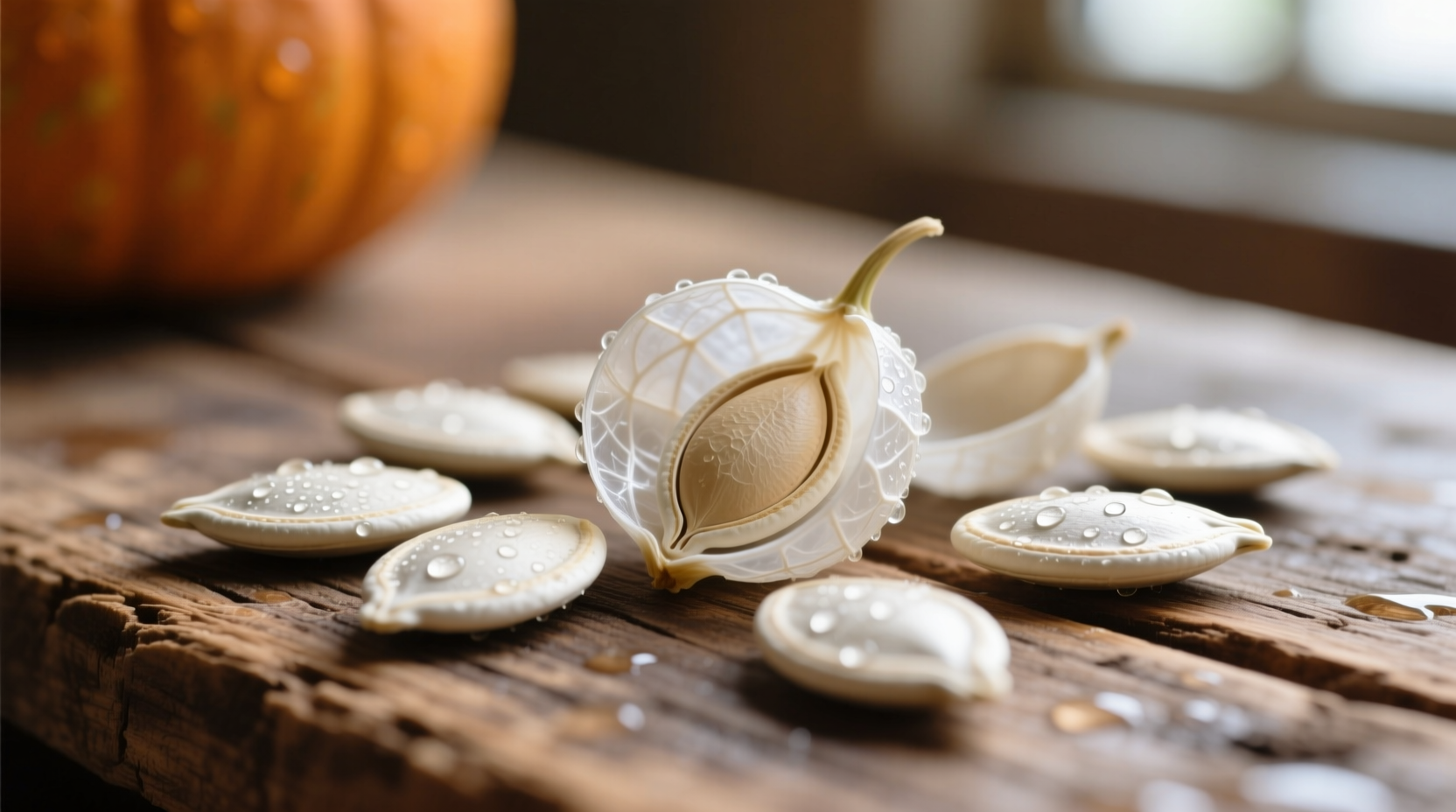Discover the complete guide to enjoying pumpkin seeds with their shells intact. Whether you're carving pumpkins for Halloween or preparing a fall recipe, understanding how to properly handle, prepare, and consume pumpkin seeds in shell can transform your experience from messy chore to nutritious delight.
What Exactly Are Pumpkin Seeds in Shell?
When you scoop out a pumpkin, you're harvesting pepitas—the edible seeds nestled within protective white or tan shells. Unlike some seeds that require removal of inedible husks, pumpkin seed shells are technically edible but present unique considerations for consumption.

Nutritional Value: Shelled vs. In-Shell Comparison
| Nutrient (per 1 oz/28g) | Shelled Seeds | Seeds in Shell |
|---|---|---|
| Calories | 158 | 125 |
| Protein | 8.5g | 5.2g |
| Fiber | 1.7g | 5.3g |
| Magnesium | 151mg (37% DV) | 92mg (22% DV) |
| Zinc | 2.2mg (20% DV) | 1.3mg (12% DV) |
Source: USDA FoodData Central (accessed September 2025). The shell dilutes nutrient density but significantly increases dietary fiber content.
Digestibility and Safety Considerations
While pumpkin seed shells won't harm you, they present specific digestive considerations. The shells contain cellulose—a fiber humans cannot fully break down. For most people, this passes through the digestive system without issue, potentially aiding bowel regularity.
However, individuals with certain digestive conditions should exercise caution:
- Those with diverticulitis may experience irritation from the fibrous shells
- People with irritable bowel syndrome (IBS) might notice increased symptoms
- Individuals recovering from gastrointestinal surgery should avoid until cleared by their physician
Step-by-Step Preparation Timeline
Transform raw pumpkin seeds into delicious snacks with this professional chef-approved timeline:
- Harvesting (5 minutes): Scoop seeds from pumpkin, separating from stringy pulp
- Cleaning (15 minutes): Rinse thoroughly in colander, removing all pulp remnants
- Drying (2-24 hours): Spread on towel or baking sheet; air-dry or use low oven temperature
- Seasoning (5 minutes): Toss with oil and preferred seasonings
- Roasting (25-35 minutes): Bake at 300°F until golden and crisp
- Cooling (10 minutes): Allow to cool completely for maximum crunch
According to culinary research published in the Journal of Food Science, proper drying before roasting improves texture and prevents steaming during cooking (Journal of Food Science, 2023).
Practical Roasting Techniques for Perfect Crunch
Professional chefs recommend these techniques for optimal results when roasting pumpkin seeds in shell:
- Use a 1:4 ratio of oil to seeds (approximately 1 tablespoon oil per cup of seeds)
- Add salt after roasting for better adhesion and crunch
- Stir seeds every 10 minutes for even cooking
- Listen for the "pop" sound indicating seeds are reaching optimal crispness
- Store in airtight container within 2 hours of cooling
Storage Guidelines for Maximum Freshness
Preserve your pumpkin seeds' quality with these storage methods:
- Room temperature: Store in airtight container for up to 2 weeks
- Refrigeration: Extend freshness to 2 months in sealed container
- Freezing: Maintain quality for 6-12 months in freezer-safe packaging
Food safety experts at the USDA recommend labeling containers with preparation dates to track freshness (USDA Food Safety and Inspection Service).
Creative Culinary Applications Beyond Snacking
Don't limit pumpkin seeds in shell to simple snacking. Professional chefs incorporate them in diverse ways:
- Add to bread dough before baking for nutty crunch
- Use as topping for roasted root vegetables
- Incorporate into homemade granola clusters
- Create decorative borders for savory tarts
- Grind partially for textured salad toppings
Chef Antonio Rodriguez notes: "The shell provides structural integrity that makes pumpkin seeds ideal for applications where you want visible texture. Unlike shelled seeds that can disappear into dishes, in-shell seeds maintain their presence and add visual interest."
When to Remove Shells: Context Boundaries
While eating pumpkin seeds with shells offers benefits, certain situations call for removing them:
- For children under 5: Choking hazard concerns outweigh nutritional benefits
- When making smooth spreads: Shells create undesirable texture in pumpkin seed butter
- For certain medical conditions: As mentioned earlier, some digestive issues warrant shell removal
- When maximum nutrient absorption is priority: Shelled seeds provide more concentrated nutrition
Final Thoughts on Enjoying Pumpkin Seeds in Shell
With proper preparation and understanding of their characteristics, pumpkin seeds in shell can be a nutritious, satisfying addition to your diet. The shells add fiber and texture while requiring minimal processing—making them an excellent choice for those seeking minimally processed foods. By following these professional guidelines, you'll transform what might seem like kitchen waste into a valuable culinary resource.











 浙公网安备
33010002000092号
浙公网安备
33010002000092号 浙B2-20120091-4
浙B2-20120091-4